Texas History: Among Galveston's historical gems, don't skip the Rosenberg Library
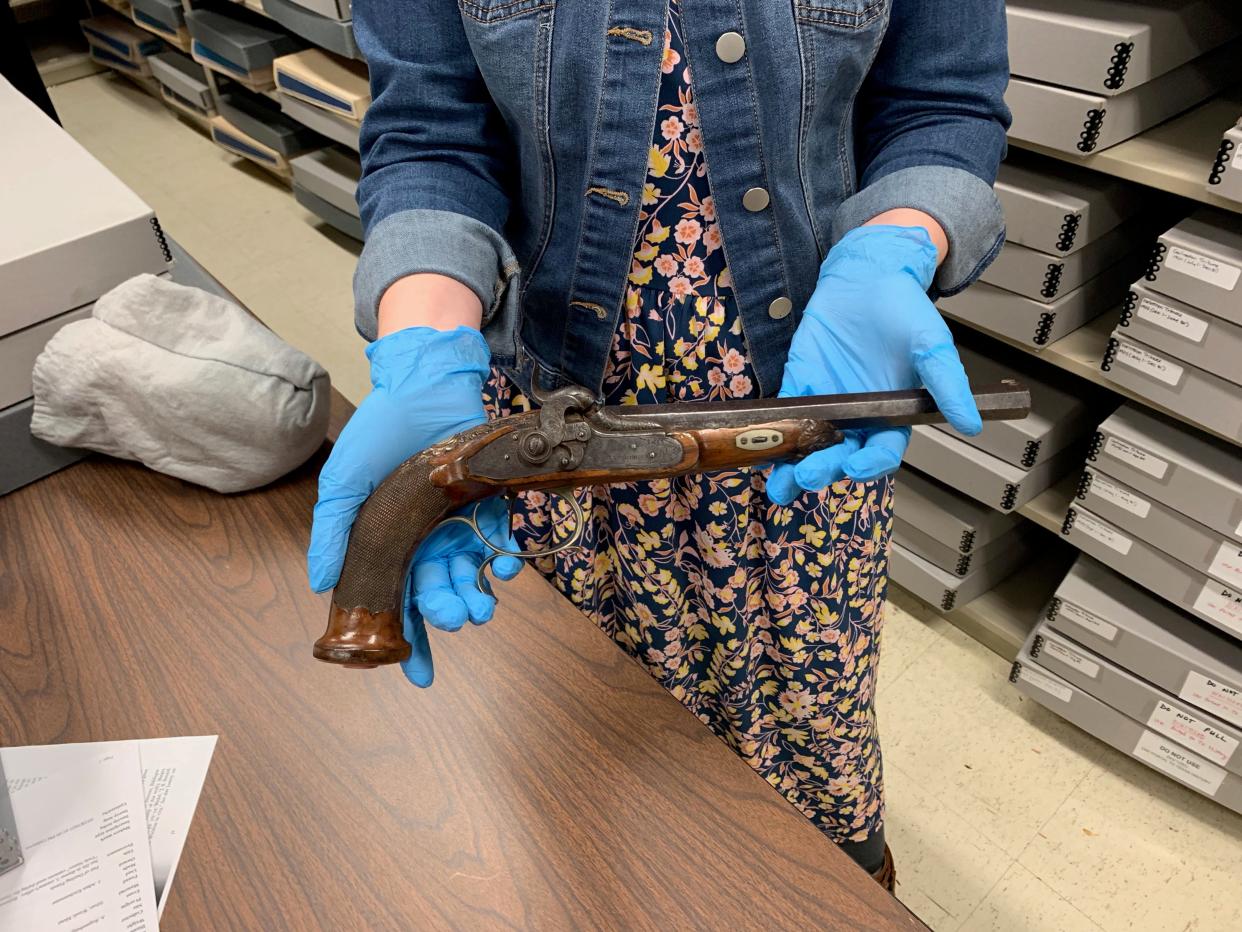
GALVESTON — This island city has produced its share of magnificent, if flawed philanthropists.
Consider the Moody family, which made its money in cotton, media, hotels, insurance and banking. Although visited by periodic scandals, including a disputed estate and accusations of fraud over the course of generations, the name is attached to countless worthy efforts across the state, including at least seven high-profile civic projects in Austin. The latest will be the soon-to-open Moody Center on the University of Texas campus.
Don't forget George Mitchell, who made his fortune in oil, gas and land. One of his decades-long passion projects was to revive the beauty and color of his native Galveston, along with its economy and culture. But hydraulic fracturing, or fracking, which he essentially developed, has damaged parts of the state; during his lifetime, Mitchell warned that the practice should be carefully regulated.
You see their names and others all over this historic city, once the largest in Texas.
Another surname is not as well known off the island, unless you happen to be obsessed with Texas history. Yet Henry Rosenberg, a Swiss-born merchant and banker, backed countless civic projects in Galveston.
Among his great gifts was the Rosenberg Library, arguably the oldest continuously operating public library in the Texas. Founded in 1871 as the Galveston Mercantile Library and reopened after the 1900 storm with Rosenberg's name on a new building, it is rivaled only by the 1899 Dr. Eugene Clark Library in Lockhart and the 1903 Carnegie Library in Bryan.
The 1904 Rosenberg building is also home Galveston and Texas History Center, which evolved from the Texas Historical Society, founded in 1871. It is one of the top collectors of materials that interest scholars, authors and just plain lovers of our state's history. Located on the library's top floor, it can currently be visited by appointment only.
"Rosenberg was all over this city," says Mike Miller, the library's executive director. "You can't go anywhere without seeing the good he did."
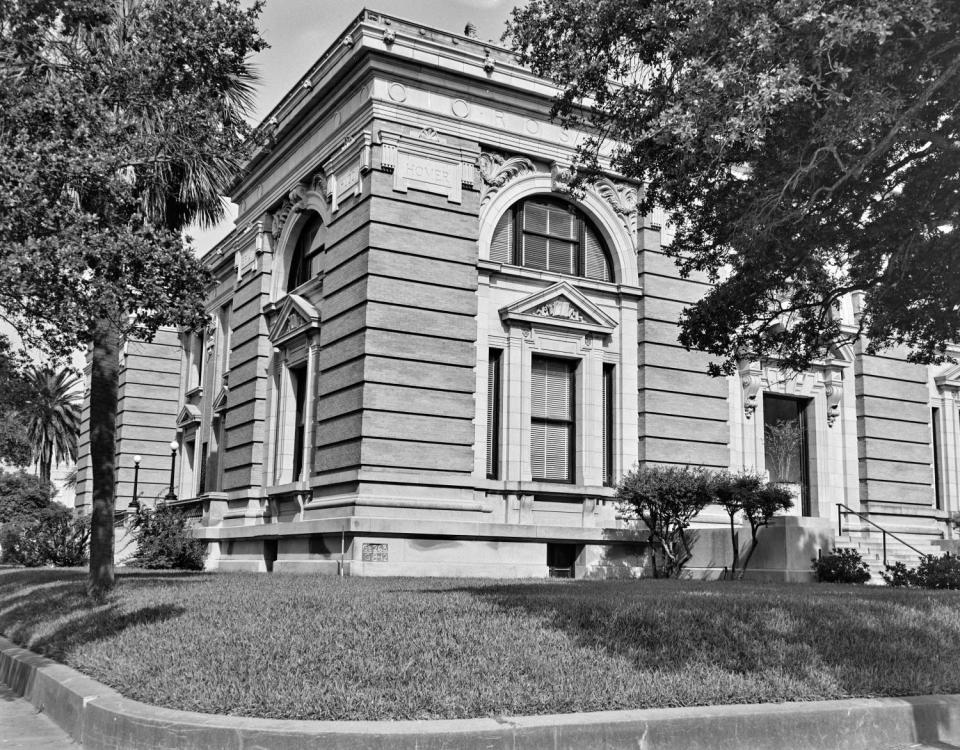
Bundled Galveston gems
Miller, until recently the Austin History Center's manager and city archivist, took me on a tour of the library building the week before Mardi Gras in this city that maintains deep cultural ties to New Orleans.
We started outside at the bronze statue of Rosenberg, who naturally wore Mardi Gras beads this day. Nearby stands one of the city's original 17 ornate Rosenberg fountains, which supplied "man and beast" with clean drinking water.
Miller explains that, upon his death in 1893, Rosenberg left $600,000 — worth tens of millions today — to establish a permanent public library. Today, that endowment is pegged at about $30 million and produces at least $1 million a year for the Rosenberg's operations. Most of the rest of the library's $4.5 million budget is made up by the city and county.
"We're a private nonprofit, but we function as the city's public library," Miller says. "We also serve as the headquarters for the Galveston County Library System with eight member libraries and an extension service."
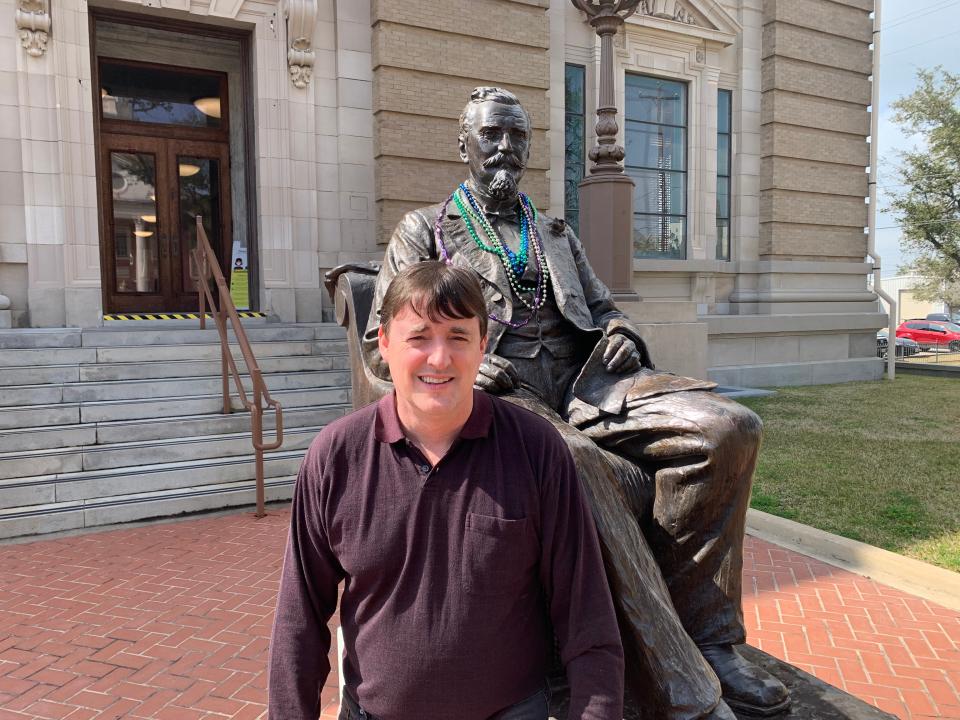
The 1904 part of the library was built in three stories and designed by the St. Louis firm of Eames and Young Architects in a sturdy Renaissance Revival style. This part of the building is characterized by palatially high ceilings, quiet alcoves and open social spaces.
At one end, it matches up with the 1971 Moody Memorial Wing — there they go again! — which was finished in five floors if you count the attic.
"We're a museum that's also a public library and a history center," Miller says.
The museum function is mostly on hold. Rooms of artifacts are stored under optimal conditions. Yet after several phases of renovation since Hurricane Ike, the revived museum project has undergone pandemic-related delays and seen the death of its main designer.
One of the recent updates revealed magnificent coffered ceilings. A few paintings hang in a large upstairs galleries, but these terraced rooms could one day tell several of Galveston's stories, including its most dramatic one — the 1900 storm that almost destroyed the city.
It would make a fine complement to the Bryan Museum, which holds the Texas history collection of J.P. and Mary Jon Bryan and is located a few blocks away in a building — yes — originally donated by Rosenberg.
"One of the things that attracted me to this job was the idea of helping to design and build a museum and bring it up to 21st century standards," Miller says. "We can move away from old-style interpretation, since we now have a blank slate to tell Galveston's story."
Texas History: The singular childhood memories of Richard Overton, who died at age 112
Inside the history center
The Galveston and Texas History Center, located at the top of the Moody wing, fairly vibrates with the past. It preserves and makes available materials about the whole of Galveston history, as well as Texas history up until the Civil War.
In these sacred rooms, Lauren Martino Henry, special collections manager, was my guide. She told me about manuscripts, oral histories, rare books and other objects, as well as 100,000 historical photographs, including more than 1,000 related the the 1900 storm damage.
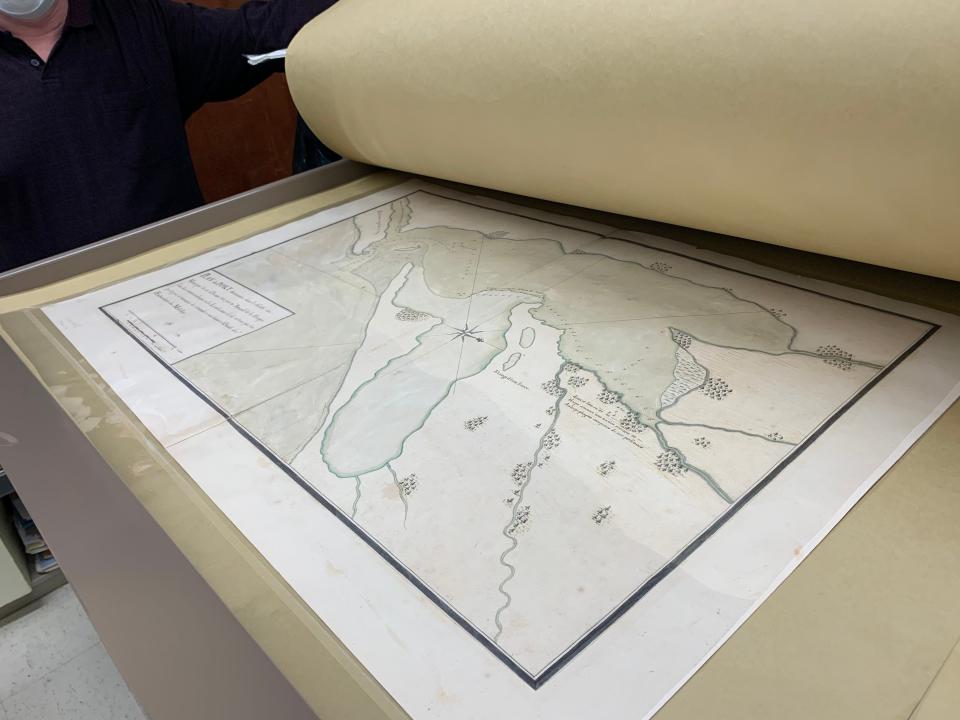
"That subject is popular," Henry says. "But each year, we also see a dramatic increase in inquiries about Juneteenth."
On June 19, 1865, in Galveston, Union Gen. Gordon Granger gave the orders that granted freedom to more than 250,000 enslaved people in Texas. The date was widely celebrated in Texas before becoming a federal holiday.
Henry says that people donate items found in the thousands of historic structures in town.
"We have no problems with acquisitions," she says. "But there's never enough staff to process them."
Like almost all history nonprofits, the museum could use more money. With its limited staff, senior archivist Sean McConnell has taken seven years, for instance, to digitize images from the Galveston photographic subject file, and only about a third of the holdings are done. All of the 1900 storm images have been digitized.
Henry showed me canisters of old movies, an intact 15th century Book of Hours, a 1721 French map of Galveston Bay (one of only two in existence, and the other is housed at the Library of Congress), a letter from an 8-year-old girl who survived the 1900 storm and a 1819 letter from pirate and privateer Jean Lafitte, who made Galveston his base.
"Kids love pirates," Henry says. "But the letter from the little girl helps with tours of school groups. It's hard to talk about the 1900 storm with children."
Texas history, delivered to your inbox
Click to sign up for Think, Texas, a newsletter delivered every Tuesday
One of the fascinating objects in the collection is a pair of Sam Houston's ceremonial dueling pistols, likely a gift from the admirers in Cincinnati. The state of Ohio sent fighters to help out during the Texas Revolution. According to historians, Houston never discharged the pistol, even though he was challenged to at least a dozen duels.
Another excellent thing about history center: All of its digital holdings, many of which can be found on Portal to Texas History or the center's website, are free to the public. You don't even need a library card.
That includes back issues of the Galveston Tribune, the city's second big historical newspaper, along with the more familiar Galveston Daily News. The hard copies can be found in a climate-controlled vault wrapped inside a long room of concrete and reinforced steel.
Good strategy if — or rather when — another hurricane hits the city.
Henry: "This is the safest place in Galveston."
Texas History: Here's how to keep track of your free Think, Texas newsletters
More on Mr. Rosenberg
The Galveston and Texas History Center holds more than 13,000 linear feet — two and a half miles — of written, visual and oral materials.
Like many history centers, such as the LBJ Presidential Library and University of Texas' Ransom Center in Austin, the archivists want to know in advance what research interests you. That way, the material will be waiting for you in the reading room when you arrive. Hence, the necessary appointment.
I chose Mr. Rosenberg.
First, I dove into "Henry Rosenberg: 1824-1893," a commemorative volume published in 1918.
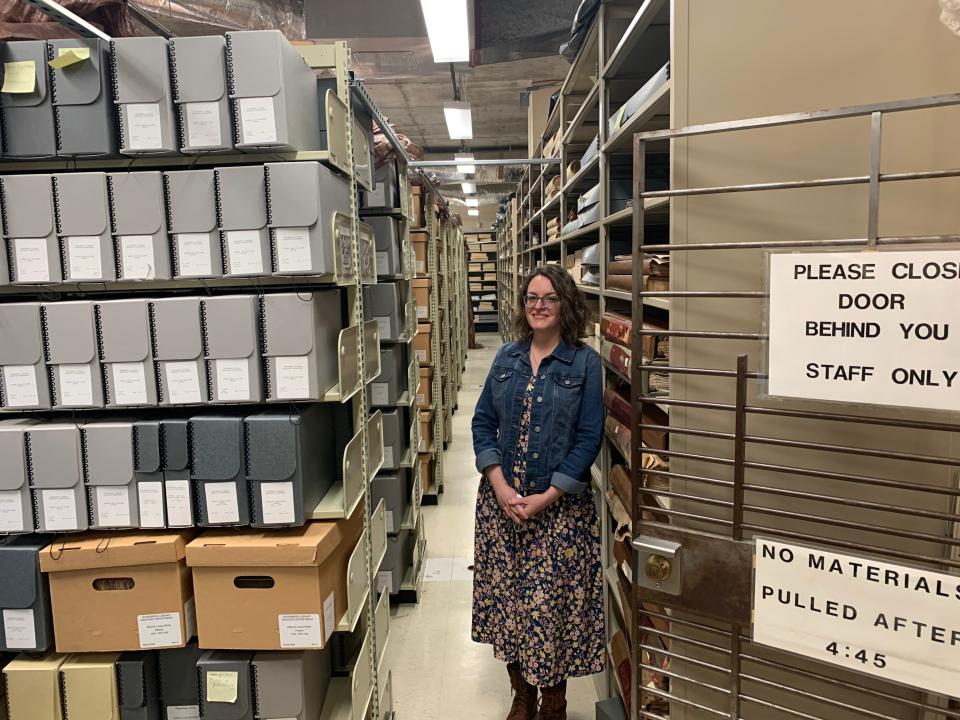
Hailing from the village of Bilton in the Alps, Rosenberg arrived in the city with almost no money. Starting with a salary of $8 a month, he made a fortune in dry goods, banking, shipping and other endeavors over the course of some 50 years in Galveston.
He championed harbor improvements, as well as education through the Rosenberg Free School. He put up the money for the 1882 Eaton Memorial Chapel at Trinity Episcopal Church and built the Galveston Orphan's Home and the Letitia Rosenberg Women’s Home. He is to thank for those 17 scattered drinking fountains.
His enduring masterpiece, the Rosenberg Library, opened June 22, 1904.
I next worked through a short stack of "clippings files," which were filled with troves of Rosenberg trivia.
I learned that this building's predecessor, the Galveston Mercantile Library, opened in 1871 on the second floor of the Hurlburt Building. In 1873, it was donated to the city and was known until 1904 as the Galveston Public Library. Its 7,505 volumes were donated to the completed Rosenberg in 1904.
I also learned that, in 1905, the Rosenberg opened its first extension, the segregated Colored Library at 26th Street and Avenue M.
'Kind and gentle': Remembering Texas preservation architect David Hoffman
I returned to the library website to find a lively article by David Brown and Rhonda Fanning of the Texas Standard radio program. It delved into the three oldest public Texas libraries in Galveston, Bryan and Lockhart.
I loved how, in the article, Rachael Medders of the Bryan library described the urban scenes that probably inspired all three libraries — and a great many cultural improvements in Texas during the late 19th and early 20th centuries.
“We had quite a few saloons in Bryan before the Carnegie came to exist,” Medders says. “Lots of ladies in the town thought that we needed a lot more culture than hangings on the courthouse lawn and plenty of uncouth drinking saloons.
"So the Women’s Club — which was formerly known as the Municipal Improvement Club — thought that they really, really could do with a Carnegie library because the news had started to spread that Mr. Carnegie was giving grants.”
Michael Barnes writes about the people, places, culture and history of Austin and Texas. He can be reached at mbarnes@statesman.com.
If you go to the Rosenberg Library
Where: 2310 Sealy Ave. in Galveston
Hours: Library: 9 a.m. to 5:45 p.m. Monday, Wednesday, Friday and Saturday; 9 a.m. to 8:45 p.m. Tuesday and Thursday. History Center: 9 a.m. to 6 p.m. Tuesday-Saturday.
Info: rosenberg-library.org; galvestonhistorycenter.org
Note: If you want to do research on the materials in the history center, make an appointment in advance. You can visit rest of the library any time during hours of operation.
This article originally appeared on Austin American-Statesman: Dig into the history of Texas at the Rosenberg Library in Galveston

